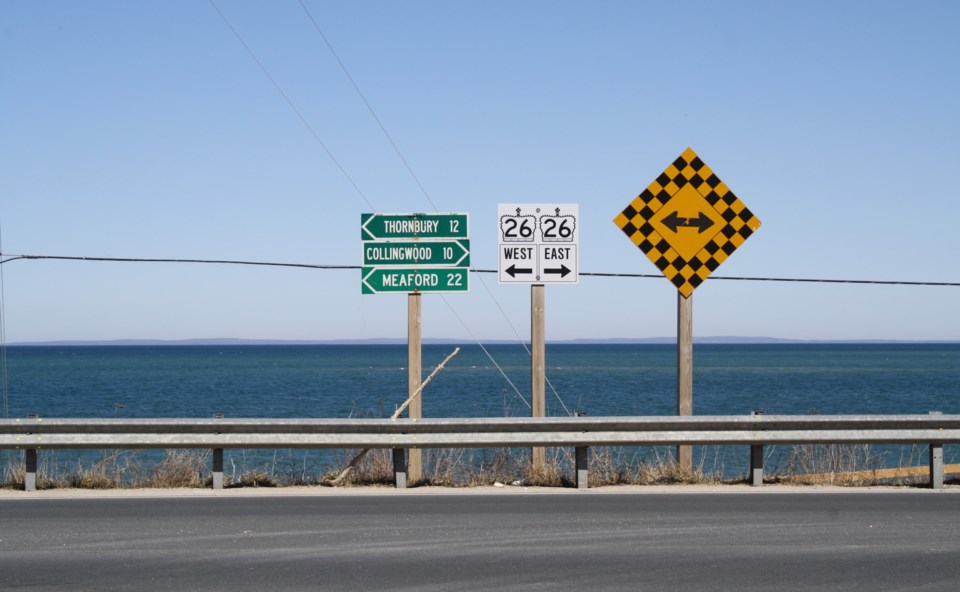A preliminary traffic study conducted by staff at the Town of the Blue Mountains (TBM) shows traffic volumes on Highway 26 have increased 76 per cent since 2012.
This past summer, TBM Mayor Alar Soever arranged for the speed limit on Highway 26, from Delphi Lane to Grey Road 21, to be reduced from 80 km/hour to 50 km/hour.
Soever said the area had become a safety concern with increased traffic volumes and large numbers of pedestrians near the highway at Northwinds Beach.
The same stretch of highway made headlines again on Monday after a fatal collision near Fraser Crescent claimed the life of a 60-year-old Collingwood woman.
TBM staff say they are currently in the process of examining this stretch of highway through the town's Transportation Master Plan Project.
According to project coordinator Adam Fraser, as part of the ongoing project, traffic counters were installed along Highway 26 near Brophy’s Lane and the Circle K from Oct. 5 to Oct. 22.
“The busiest dates recorded were Friday, Oct. 9 and Saturday, Oct. 10 with 17,500 vehicles and 16,900 vehicles daily,” he said.
Although the study was only conducted for a short period of time, comparisons to previous town studies of the same area show a large increase in traffic volume.
“To provide perspective, in 2012, traffic counters were installed on Highway 26 near a Georgian Trail crossing. Since that time, there appears to be a 76 per cent increase in traffic,” said Fraser. “And then during peak volume time, we start seeing increases of almost 90 per cent.”
Fraser also noted that based on an initial assessment of vehicle speeds, the 85th percentile, which is the speed that most drivers will follow, when the posted speed limit was 50 km/h, was 70 km/h.
“That increased to 82 km/h when the speed limit was brought back up to 80,” Fraser said.
Fraser also noted that there had been two collisions along this section of the highway prior to the speed limit change in June, as well as two additional incidents - one in mid-July and another in early-August.
However, he added that the assessment period likely wasn't long enough to draw any conclusive statement as to whether or not the speed reduction had a significant change in safety.
Shawn Carey, director of operations for TBM said the town is only in the initial stages of examining both current and historical traffic data.
“This is very preliminary information,” said Carey. “Once we hear back from the Ministry, hopefully we'll have a little bit more of a robust data set to work with.”
TBM staff have requested traffic collision data from the Ontario Provincial Police and have reached out to the Ministry of Transportation to share the data points collected and request any supplementary traffic information to allow for further assessment.
At the Transportation Committee's most recent meeting held on Jan. 19, the committee confirmed it has acquired Stantec as the consultants for the Transportation Master Plan Project.
The committee will be meeting with representatives from the consultation company in early February to determine collective priorities for the project.



